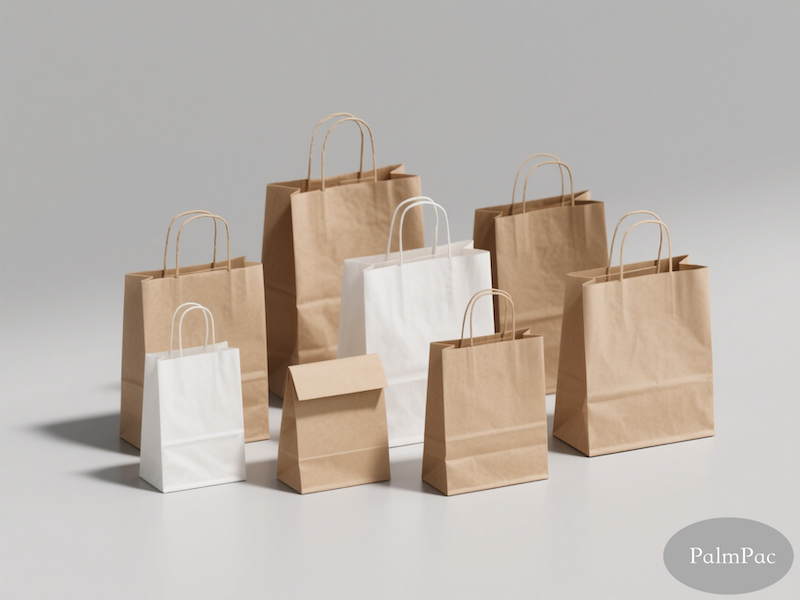A Phenomenal Case: How a Fried Chicken Bag Shook the Industry
In 2023, KFC launched its “Zero-Leak Paper Bag” globally, achieving three groundbreaking feats:
Holds 240ml of soda for 30 minutes without leakage
Resists 98°C hot oil with no toxic substance migration
Achieves 92.7% natural degradation within 45 days
Market Impact:
China’s per-bag cost rose by ¥0.15, but average order value increased by ¥4.7 (consumers paid a premium for sustainability)
Supplier Stora Enso’s stock surged 38% in one month
Triggered urgent R&D upgrades at McDonald’s and Burger King
Strategic Significance:
This marks a tipping point for food-grade paper technology, reshaping the global $2.3 trillion food packaging market.
Tech Deep Dive: How Nanocellulose Rewrites Material Science
From Wood to “Super Armor”
Production Process:
1.Wood crushing → 2. Acid-base treatment to extract cellulose → 3. High-pressure homogenization for nanocellulose → 4. Cross-linking with chitosan into film
Performance Comparison:
Metric Traditional PE-coated Paper Nanocellulose-coated Paper Improvement
Tear resistance 18N/mm² 53N/mm² 294%
Water vapor transfer 12g/m²·day 3.2g/m²·day 73% less
Degradation time 400+ years 45 days 99.7%
Molecular Defense: Waterproof & Greaseproof Mechanisms
Hydrophobic layer: Nanocellulose forms a honeycomb structure (contact angle 112°), causing water droplets to roll off
Grease resistance: Fluorocarbon chains repel oil molecules
Self-healing: Chitosan molecules re-crosslink under >70% humidity to repair micro-cracks
Compostable Certification: The “Green Passport” to a Trillion-Dollar Market
Global Certification Wars
Standard Core Requirements Commercial Value Key Players
BPI 90% degradation in 12 weeks/Mandatory for North America/AmazonWhole Foods
OK Compost Meets EN13432/EU market access/Nestlé, Unilever
ABA Australia-specific tests/Oceania market entry/Woolworths
GB/T 38082 China’s biodegradability /standard Government subsidies/Meituan, Ele.me
KFC’s Certification Strategy
Material formula: Lignin content <3%, heavy metal limits 10x stricter than national standards
Degradation testing: Validated in 6 extreme environments (seawater, acidic soil, etc.)
Traceability: Blockchain QR codes track raw material origins
Cost Trade-off:
Certification added ¥0.08 per bag but secured 25% of government procurement contracts
Hidden Battles: The “Paper Bag Economics” Food Giants Keep Secret
Cost Restructuring
Traditional Bag:
Wood pulp (61%) + PE coating (29%) + Printing (10%)
Tech-Enhanced Bag:
Bamboo pulp (43%) + Nanocellulose (32%) + Hydrophobic coating (18%) + Smart ink (7%)
Cost-Saving Tactics:
Bamboo replaces wood: 5x faster growth, Guangxi bamboo pulp costs ¥2,800/ton
Coating thickness reduced from 12μm to 8μm via vapor deposition (22% material saved)
Hidden Profit Models
Carbon trading: Each bag generates 0.13kg carbon credits, annual revenue ¥43M
Data harvesting: Temperature-sensitive ink optimizes cold chain logistics
Ad revenue: Washable surface enables reusable ad space
Case Study:
Shanghai KFC rents bag ad space to local cinemas at ¥0.5/bag, earning ¥1.7M annually
Supply Chain Opportunities: Investment Hotspots from Lab to Market
Upstream Material Wars
Nanocellulose:
Japan’s Oji Paper launches 3,000-ton/year production line
Chenming Paper & Chinese Academy of Sciences develop straw extraction tech
Hydrophobic coating:
Covestro’s bio-based fluorochemical prices rise 23%
Bluepha’s synthetic biology breaks foreign monopolies
Equipment Makers Cash In
Finland’s Valmet unveils nanocellulose coating machines (orders backlogged to 2026)
China’s Han’s Laser develops 0.01mm-precision bag perforation systems
Emerging Business Models
Certification consulting: SGS offers “Global Compostable Certification Package” (¥850,000)
Subscription packaging: RePack’s 300k European users pay monthly
Carbon credit trading: CTI launches bag carbon exchange
Future Battleground: 2030 Food Packaging Predictions
Material Evolution
2025: Nanocellulose + starch composites
2028: Self-growing mycelium packaging
2030: Edible air-formed packaging
Regulatory Shifts
EU’s proposed €2.3/kg “eco-tax” on non-compostables
China includes food-contact materials in CCC certification
FDA mandates “microplastic release” labeling
Disruptive Tech
MIT’s light-degradable coating (1-hour breakdown)
Tesla-powered distributed paper mills (100% energy self-sufficient)
Quantum computing material simulation (R&D cycles cut from 5 years to 6 months)
Action Plan: 3 Steps to Lead the Paper Revolution
Tech Strategy
Partner with universities for “bio-based material labs”
Acquire Southeast Asian bamboo pulp bases
Develop “smart coating stations” for customization
Certification Playbook
Target regional standards (ABA/GB) first
Use BPI to enter North American premium markets
Obtain Carbon Trust labels for premium pricing
Risk Management
Avoid greenwashing: Japan’s 7-Eleven fined ¥230M for false claims
Bypass patent traps: Use silk protein instead of chitosan
Prevent overcapacity: Integrate “Global Pulp Price Alert System

